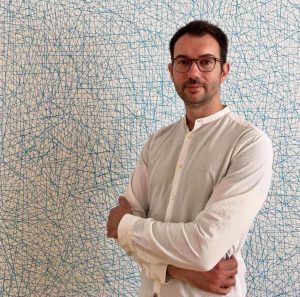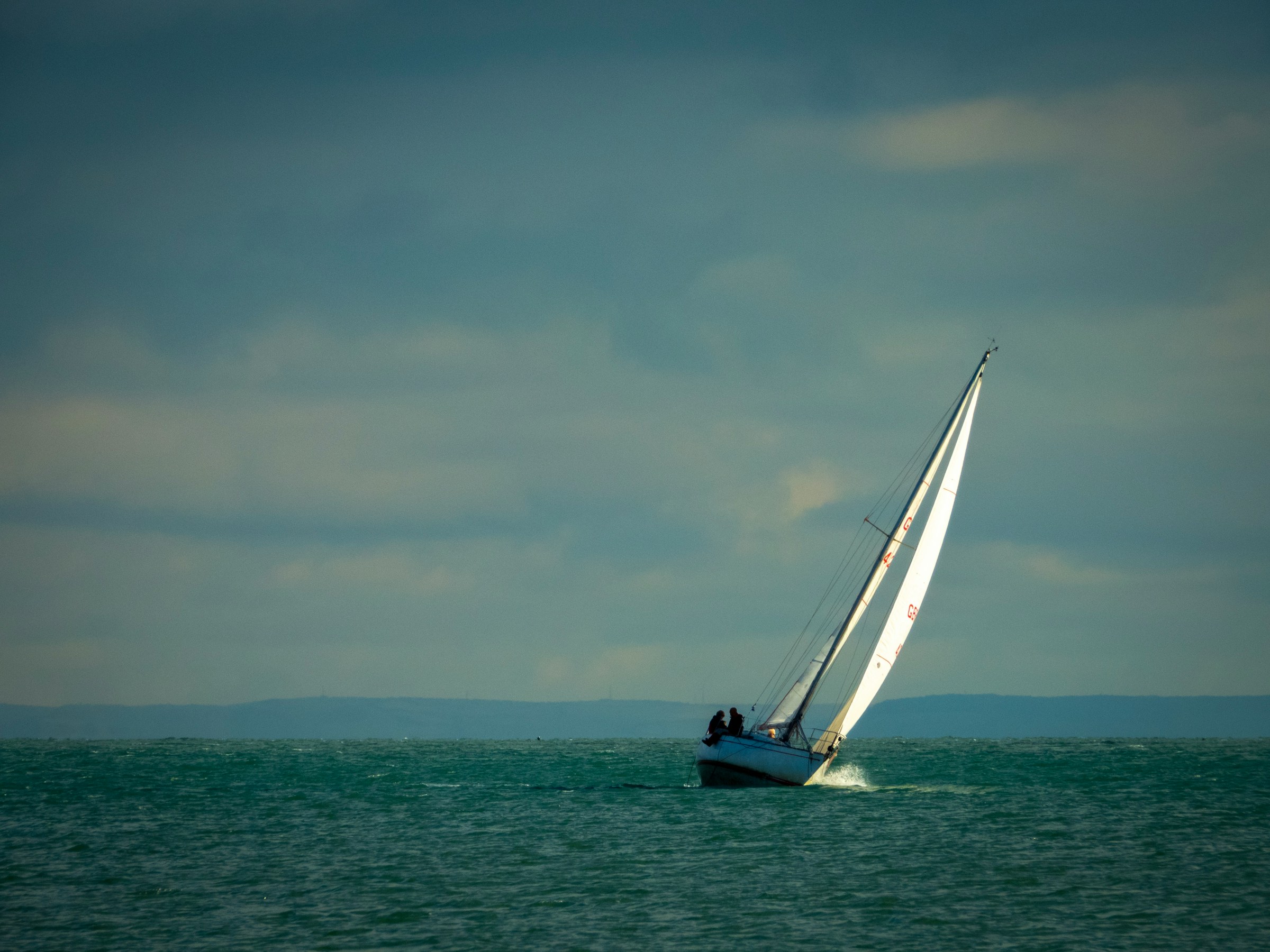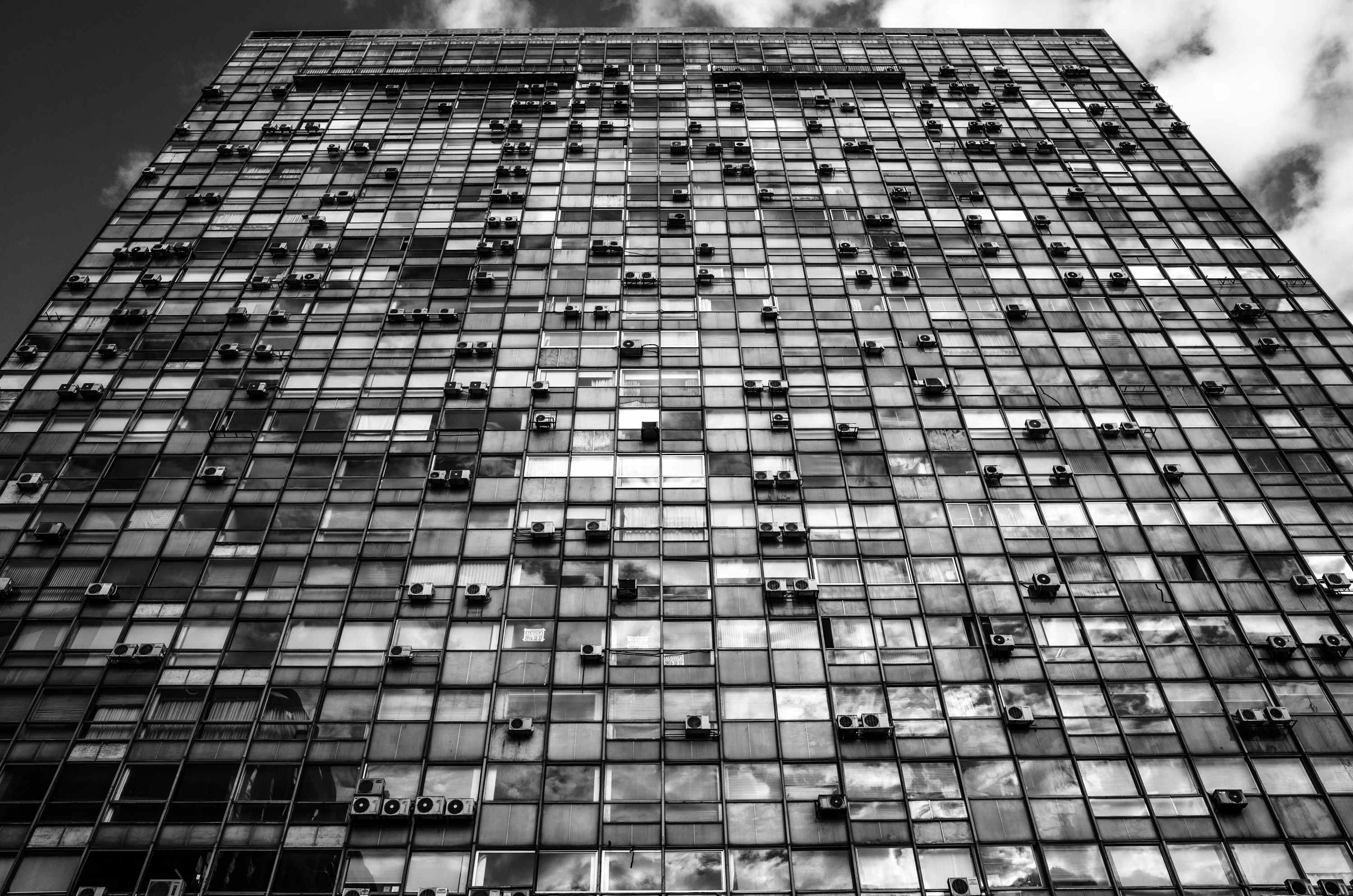Over the past ten years, I have grown to understand that photography has a role in solving the climate crisis. The study of documentary photography, the search for photographic projects on climate issues, the development of my own documentary projects, as well as discussions with artists and scientists operating in the domain of climate change have all helped me reach this realization.
I began by questioning why, as a scientist, I was interested in photography. In fact, the connection between documentary photography and my research was not clear to me for a long time, and I had to let my rational mind be molded by photography.
Science is a discipline that aims at, among other things, finding a meaningful order in chaos. To find patterns and be able to give them a connotation.
science /’sʌɪəns/
noun
the intellectual and practical activity encompassing the systematic study of the structure and behaviour of the physical and natural world through observation and experiment
Oxford dictionary
The same holds for documentary photography, which is nothing but a way to put order in the world, to find meanings.
documentary photography
a style of photography that provides a straightforward and accurate representation of people, places, objects and events, and is often used in reportage
Tate Gallery
To me photography represents the subjective space that science doesn’t allow me to use, a space that I can fill by using similar mental processes that I developed over years of research. A practice that makes me feel more complete, by warming up the interesting yet cold and rational scientific world.
Photography, meant as both a documentary and artistic instrument, and science are two practices that have influenced one another inside my mind and are merging into one thing. A tool that I can use to talk about the things I care about the most, one of which is the climate.

Air-sea-ice chamber, University of East Anglia
Norwich, UK. Credits: Fabio Cian
The scientific nature of photography
Although I was trained as a scientist and despite my job as a scientist has to do with images (even though from satellite), it’s not immediate for me to see photography as a technology or a scientific tool. By instinct I associate photography with art and aesthetics, and I tend to see my approach to photography as a path that is taking me towards art. Nevertheless, photography was used in science much earlier than in art. Scientists immediately recognized its potential in the study of chemical radiation of light.[1]
In the beginning, it was more a science of photography itself, where chemistry and physics merged to better understand and improve the methods for visual representation of reality. Subsequently, photography started focusing on the study of the microscopic natural world (microphotography)[2], and on the observation of the sky: famous astronomers like William Herschel took pictures of the moon and the sun in the 1850s, and Edwin Hubble photographed the Andromeda Nebula in the 1920s. No to mention that photography was adopted from the very beginning in medicine with the first portrait of a woman with a goiter taken by Hill and Adamson in 1847, or the study of people with psychological disorders[3] by the English psychiatrist Hugh Welch Diamond in the 1850s.

Understanding Mars’ climate and the processes that led to its current status could also shed light on Earth’s climate, allowing us to understand what could happen to our planet.
Jet Propulsion Laboratory, California Institute of Technology/NASA, Pasadena, California, US. Credits: Fabio Cian
Photography as an art
Today it’s obvious that photography is an art and, as Charlotte Cotton writes, “to identify art as the preferred territory for their images is now the aspiration of many photographers.”[4]
Nevertheless, this was a long and debated path and it took a century before any photographs entered an art gallery, which happened with the major show organized by the American photographer Alfred Stiglitz in 1910 at the Albright Art Gallery in Buffalo, New York.[5]
In the beginning, the main belief was that machines were behind photographs and not human creativity. A philosophical turning point occurred at the beginning of the 20th century when intellectuals recognized the creative nature of photography. The Italian philosopher and historian Benedetto Croce who wrote in 1909 that, if photography has an artistic component, it was because “it conveys, at least in part, the photographer’s intuition, his point of view, the attitude and the situation he has labored to capture.” [6]
It was the recognition of a uniquely human component in the practice of photography that allowed it to be perceived (also) as art. However, what struck me the most in this process were the words of de La Sizeranne on photography and art who claimed that photography “went beyond the promises of science. It had promised us nothing but truth, and it gave us beauty.”[7]

Amazon Tall Tower Observatory, Max Planck Institute for Chemistry, Amazonas, Brazil
De La Sizeranne’s words pay tribute to the ambivalent nature of photography, and unravel the intuition that photography eludes all strict definitions. Photography is not only either science or art: it can be more than the pure sum of its artistic and scientific components. In the words of the American philosopher Susan Sontag:
“[…] being photographed gives us a sense of being real and of existing. Photography is not only a way of preserving the past but also a way of handling the present. Photography also means that we can see something before we experience it, and that takes away from the virginity and openness of the way we experience reality. Reality, in other words, is photographed before it is experienced.”[8]
Photography, as an art and scientific practice in the climate crisis
This to me closes the circle, at least around myself, as a scientist and a photographer, in an instinctive flow from science to art, driven by the nature of these disciplines.
Photography, with its mixed nature, can serve the climate crisis, with its scientific and objective gaze to the world, its capacity to inform, its reflection of photographers’ inner worlds, the beauty and emotions that it can carry, and its capacity to provide a vision of reality before it’s experienced. We can exploit the unique extra dimension that photography can add to scientific findings when it acts at the intersection of art and science.
Unsurprisingly, I’m not alone on this journey. Many others have walked a similar path before I did and have produced astonishing works. Other scientists became photographers following ideas like mine, and many photographers and artists let their work be guided or contaminated by science. It’s a community of conscious and concerned photographers that continue to experiment and propose new approaches to bring people closer to one of the most important crises of our time.
In this ever-growing community, to mention just a few examples, we find the initiative started by Christina Mittermeier, a marine biologist and photographer, who founded the International League of Conservation Photographers (iLCP), a global community that “brings together photographers who make art to tell the story of a planet in the midst of radical change.” In 2017, Mittermeier was able to spark a global dialogue about climate change, when she published a photograph of an emaciated polar bear on a barren arctic tundra.
As well as the work of Esther Horvath, a fellow of iLCP, which focuses on the polar regions and the Arctic Ocean in particular, documenting scientific expeditions and behind the scenes science stories. Horvath was awarded the World Press Photo in 2020 and with her work she tries to help make a difference in how people understand the climate crisis and, in collaboration with scientists, help raise public awareness regarding these fragile environments.
Or Lucas Foglia, who focuses on the intersection of human belief systems and the natural world, who believes that “after a generation of working to convince people that climate change is a problem, we need to start bridging awareness and action”.
And Ian Van Coller, who, inspired by the annotated drawings and paintings of Victorian era naturalists, botanists and ornithologists, let scientists annotate his photographs and therefore create a dialogue between text and image, landscape and viewer, expert and novice, past, present and future.
Not to mention the more artistic approach followed by Peggy Weil, who mixes art photography and video to provide a different representation of ice cores, allowing the viewer to better connect with these kinds of scientific objects.
The intersection of art and science is also explored in The appearance of that which cannot be seen by Armin Linke, who let scientists and thinkers read his immense photo archive documenting global environmental, geological and economic changes in the era of the Anthropocene. A perfect example of how the interaction between artists and scientists can lead to unexpected reactions.
It’s not just communication
Exploring all these projects will surely bring you to the realization that it’s not “just” science communication. The merging of science and art create an extra dimension, an extra layer. It’s not just about better digesting facts and knowledge, it’s more about connection and meaning, internalizing and consciousness.
Excellent communication is needed, of course, and many studies can be found in the scientific literature showing how communication can engage the public in climate change by stimulating cognition and emotions, as well as facilitating public acceptance of climate policies.[9],[10]
Others even take a further step and show that art can help disseminate scientific information while facilitating engagement and activating emotions which aids communication between researchers, practitioners, and citizens.[11],[12],[13],[14]
On the same wave, The Guardian addressed their concern over how best to depict the climate emergency by seeking advice from the research organization Climate Visuals, that came up with seven principles for visual climate change communication[15] and found that “images that define climate change shape the way it is understood and acted upon.”

Core Repository, Lamont-Doherty Earth Observatory, Columbia University
New York, US. Credits: Fabio Cian
Scientist and artists can develop novel forms of communication
But it’s not “just that”. We need a further step that merges the languages of artists and scientists to create spaces for reflection. Studies have found that contemporary art in the climate change domain can help overcome psychological barriers, facilitate change, disrupt routines,[16] develop empathy for nature and allow for an emotional connection to grow.[17],[18]
Given the ambivalent nature of photography, which is able to act in its own exclusive niche at the intersection of art and science, I believe that it provides a unique language, an extra tool that can be used to interpret the chaos of our present and better imagine the future.

Global Greenhouse Gas Reference Network, NOAA, Boulder, Colorado, US. Credits: Fabio Cian
In the words of David Griffin of the National Geographic, “Photography emulates the way our mind freezes significant moments, […] can make real connections with people, and can be employed as a positive agent for understanding the challenges and opportunities facing our world today.” It can create storytelling that sparks connections and unlock action.
This is what I’m trying to do with my work documenting climate science, where I use photography to talk about climate change, by showing the complexity, the rigor, and the vastness of climate research.
It’s what all the scientists and photographers out there acting in this space are doing. Taking inspiration from one of my mentors, Frank Raes, the director of the Museum of Anthropocene Technology, we, scientists, photographers and artist alike, by becoming extended versions of ourselves, can create wonder and instill doubt, which is the essential fuel for critical thinking, to interpret the present and envision the future.

Fabio Cian is a scientist and documentary photographer. He holds a master’s degree in space engineering and a PhD in science and management of climate change.
He studied visual storytelling and documentary photography at the International Center of Photography in New York.
He is a disaster risk management and financing expert, focusing his research on the impacts of climate change and disasters.
As a photographer he is interested in documenting the effects of climate change on the complex natural, human, and economic system, with a particular interest for the work of climate scientists and the impact of disasters.
Fabio is author of Climate Labs – The backstage of climate change, shortlisted as one of the best climate communication projects running for the CMCC Climate Change Communication Award “Rebecca Ballestra” 2021.
References:
[1] M. Melloni, Relazione intorno al dagherrotipo, reading at R. Accademia delle Scienze di Napoli, 12 novembre 1839, p. 31
[2] Alfred Donné, Léon Foucault, “Atlas exécuté d’après nature au Microscope-Daguerréotype”, Baillière (1845)
[3] Pearl, Sharrona. “Through a mediated mirror: The photographic physiognomy of Dr Hugh Welch Diamond.” History of Photography 33.3 (2009): 288-305.
[4] Charlotte Cotton, “The Photograph as Contemporary Art”, Thames & Hudson, (2004)
[5] “Buffalo show”, Albright Gallery, Buffalo, NY, https://www.albrightknox.org/art/exhibitions/international-exhibition-pictorial-photography
[6] Benedetto Croce, Estetica, Laterza, Bari 1909, pages 20-21
[7] In “Esthétique de la photographie”, Published by Photo-Club de Paris, 1900
[8] Sontag, Susan. “On Photography”. New York: Farrar, Straus and Giroux, 1977.
[9] Geiger, N., Swim, J. K., & Fraser, J. (2017). Creating a climate for change: Interventions, efficacy and public discussion about climate change. Journal of Environmental Psychology, 51, 104-116.
[10] Swim, J. K., & Whitmarsh, L. (2018). Climate change as a unique environmental problem. Environmental psychology: an introduction, 26-35.
[11] Arce-Nazario, J. A. (2016). Translating land-use science to a museum exhibit. Journal of land use science, 11(4), 417-428.
[12] Baldwin, C., & Chandler, L. (2010). “At the water’s edge”: community voices on climate change. Local Environment, 15(7), 637-649.
[13] Curtis, D. J., Reid, N., & Ballard, G. (2012). Communicating ecology through art: what scientists think. Ecology and Society, 17(2).
[14] Marks, M., Chandler, L., & Baldwin, C. (2016). Re-imagining the environment: using an environmental art festival to encourage pro-environmental behaviour and a sense of place. Local Environment, 21(3), 310-329.
[15] Corner, A., Webster, R. & Teriete, C. (2015). Climate Visuals: Seven principles for visual climate change communication (based on international social research). Oxford: Climate Outreach. https://climatevisuals.org/evidence/
[16] Roosen, L. J., Klöckner, C. A., & Swim, J. K. (2018). Visual art as a way to communicate climate change: a psychological perspective on climate change–related art. World Art, 8(1), 85-110.
[17] Sommer, L. K., Swim, J. K., Keller, A., & Klöckner, C. A. (2019). “Pollution Pods”: The merging of art and psychology to engage the public in climate change. Global Environmental Change, 59, 101992.
[18] Sommer, L. K., & Klöckner, C. A. (2019). Psychology of Aesthetics, Creativity, and the Arts.






